Source: My UM
Typhoon Hato pummeled Macao, leaving a trail of devastation in the city. Apart from heart-wrenching deaths and enormous financial losses, the typhoon also felled a large number of trees in Macao, 7,000 of which are on the UM campus. Many faculty members and students lament that the beautiful campus was destroyed in one day. But where there are trees, there is hope.
The Campus Management and Development Office (CMDO) took immediate action after the typhoon to rescue the trees in order to restore the campus to its previous beauty. In this issue’s cover story, we interview some colleagues and students who are involved in the tree rescue operation.
Rescuing Every Tree with a Chance of Survival
Our reporter went to the Central Avenue on campus after the typhoon, and what she saw pained her. The waterfront once shaded by trees, the most beautiful sight on campus, is now littered with damaged trees, some entirely uprooted, others with amputated branches or bark.
Of the around 20,000 trees on campus, more than 7,000 were felled during the typhoon. As soon as the disaster was over, the CMDO swung into action.
In addition to repairing damaged classrooms and other teaching facilities, the office also sent workers to rescue the trees. On the first day following the typhoon, workers couldn’t find cranes to restand the trees, so they had to do it manually. It took at least ten workers to stand up one tree. CMDO Director Dick Lai understood that in the battle to rescue the trees, time was of the essence. ‘There was not a minute to waste,’ he says. ‘The longer we waited, the slimmer our chances of saving them, because trees will die from loss of water in the roots.’
The CMDO hired additional vehicles and professional gardeners to rescue those trees with a chance of survival. Every day, gardeners wearing straw hats worked under the scorching sun to save the fallen trees with the help of cranes, at a rate of 200 to 250 trees a day. Now, the first-phase post-typhoon tree rescue operation has been completed. Restanding fallen trees is only the first step. Big holes need to be dug on the ground. Soil needs to be replenished. Dead roots, branches, and leaves need to be removed to reduce water loss. And all these must be performed by professional gardeners.
According to Lai, the CMDO’s top priority during the first-phase tree rescue operation was to save every tree that has a reasonable chance of survival. 3,500 trees fell into this category. Every day, workers kept the roots of the trees moist with cotton cloths, and watered the trees with the remaining plant watering systems at fixed times, as well as plant watering vehicles, once in the morning and once at night. They also removed the dead branches and leaves to minimise water loss and increase the trees’ chances of survival.
Assisting with Post-disaster
Recovery on Campus Joseph Lin, who joined UM five years ago, is in charge of gardening and landscaping affairs on campus. Needless to say, he feels very sad to see the trees in his care badly damaged in the typhoon. ‘Trees are living things. They are like my family. We won’t give up on any tree as long as there is a chance of saving it,’he says.
Currently, Macao is in severe shortages of manpower, cranes, and other types of equipment for restanding the fallen trees. Lai’s office was faced with the same problem. Rescuing so many trees within a short period of time in the absence of sufficient resources posed a huge challenge to the CMDO. Luckily, a group of dedicated CMDO colleagues were willing to work overtime without any complaint. ‘Our colleagues spent a lot of time and energy growing the trees, so we all feel very sad, but we are confident that we will revive them the best we can,’says Lai.
New Greening Plan
To restore the campus to its previous beauty, Lai, Lin, and their colleagues have made a new greening plan. According to the plan, they will review the varieties, density, and distribution of the trees. They will also increase the area of lawns and shrubs. All these measures are designed to beautify the campus in a way that improves its capacity to resist disasters. Moreover, Lai’s office will learn lessons from Typhoon Hato and implement a new greening plan on campus. At some locations, trees will be replaced by wind-resistant shrubs. More sloping fields will be created, and different kinds of flowers and shade trees will be planted. ‘Of course, it will take some time before the new trees grow up to provide shade, but we hope that in time these measures will bring back our beautiful green campus,’ he says.
Our Pains
When the typhoon was over, 500 UM faculty members, staff, and students worked on and off the campus as volunteers, helping to clean up debris and rubbish on the streets.
Simon Lok Chon Wai was one of them. Lok feels sad that many trees in Macao that used to provide shade have been damaged. ‘Colleagues in charge of gardening affairs on campus have been working very hard to save the trees,’ says Lok. ‘I hope that with everyone working together, we will have our beautiful campus back as soon as possible.’
Song Zhihao is a postgraduate from the Faculty of Law. On the first day when classes were suspended after the typhoon, he joined a volunteer team initiated by some UM students. The sight of the typhoon-ravaged campus filled his heart with sadness; it also made him more acutely aware of the power of nature. ‘Man is powerless against the might of nature,’ he says. ‘I hope to continue to assist with tree rescue work on campus to restore our campus to its former beauty.’
Apple Wong is a fourth-year student from the Department of Economics and a member of Lui Che Woo College. During the typhoon, she voluntarily assisted with relief goods distribution in Ilha Verde. She feels very sad to see the devastation in Macao caused by the typhoon. Over the past four years, she has witnessed the seedlings slowly growing into tall trees, only to have the typhoon wipe out many of them in one day. But she chooses to be optimistic. ‘The trees have been damaged, but we can save them or grow new ones,’she says. ‘I hope we can stay positive and work together to rebuild our campus. In the future, I will remind myself to cherish the gifts of nature more.’
Iao Chon Hou is a second-year student from the Faculty of Law and a member of the Henry Fok Pearl Jubilee College. On the second day after the typhoon, Iao worked as a volunteer in Macao, cleaning up the debris and rubbish, removing amputated branches from the streets, and delivering relief goods to those in need.‘Seeing so many trees felled by the typhoon, I feel like I have lost some good friends. Trees are also living things, and it takes a long time to grow them. This disaster made me realise how insignificant and helpless humans are in the face of natural disasters. So it’s important to live in the moment,’ he says. Saddened by the number of trees lost during the typhoon, Iao has decided to use less paper in the future and take part in the activities on the Tree Planting Day.
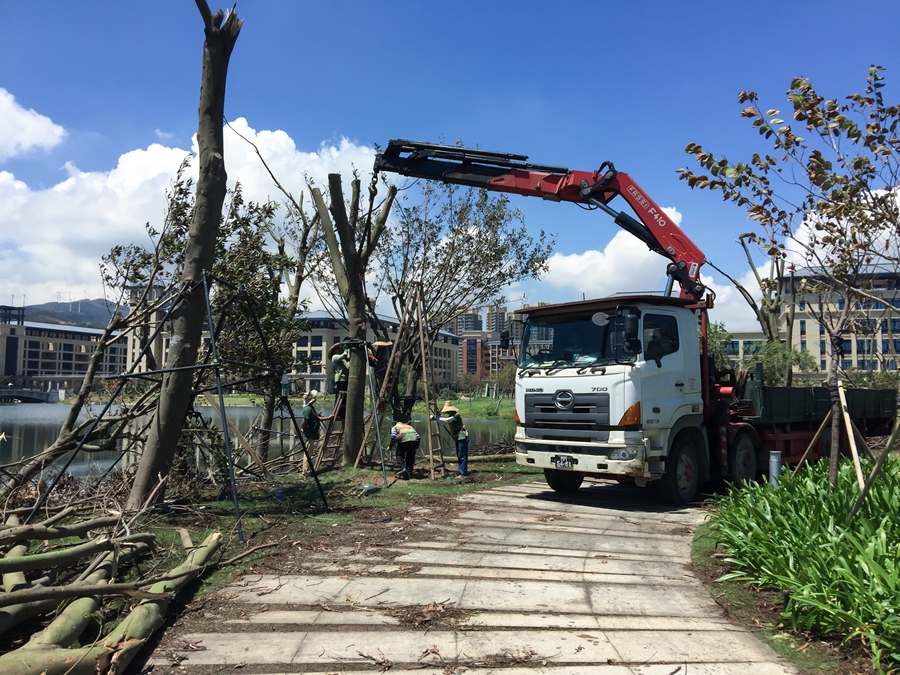
Workers try to restrand a big tree with the help of a crane
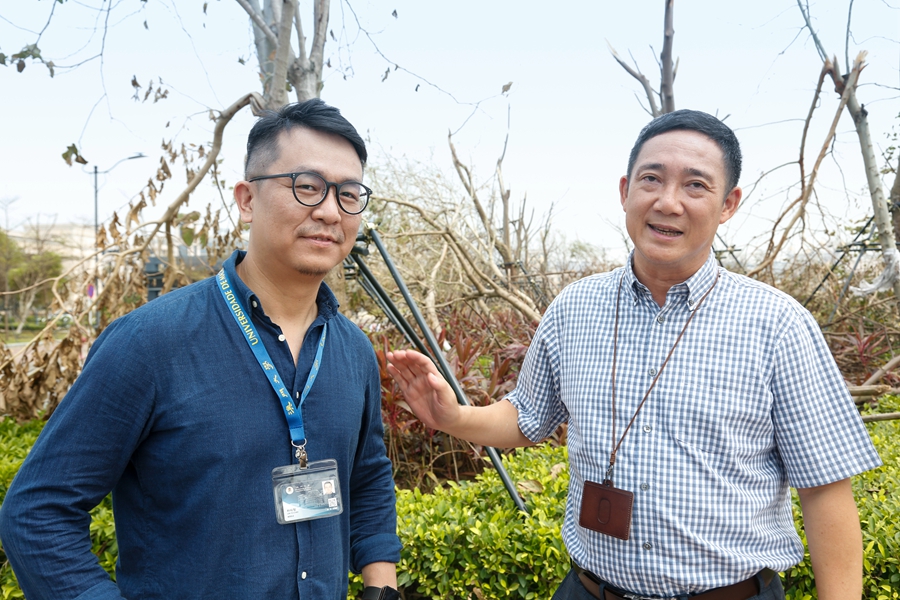
Dick Lai (right) and Joseph Lin share post-typhoon tree rescue measures
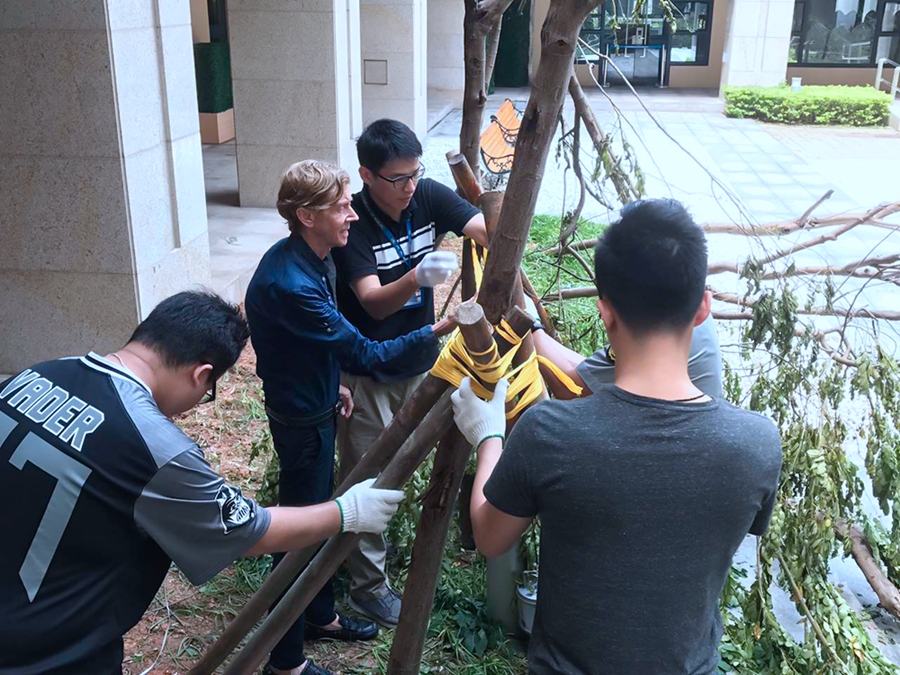
UM faculty and students stand up a fallen tree
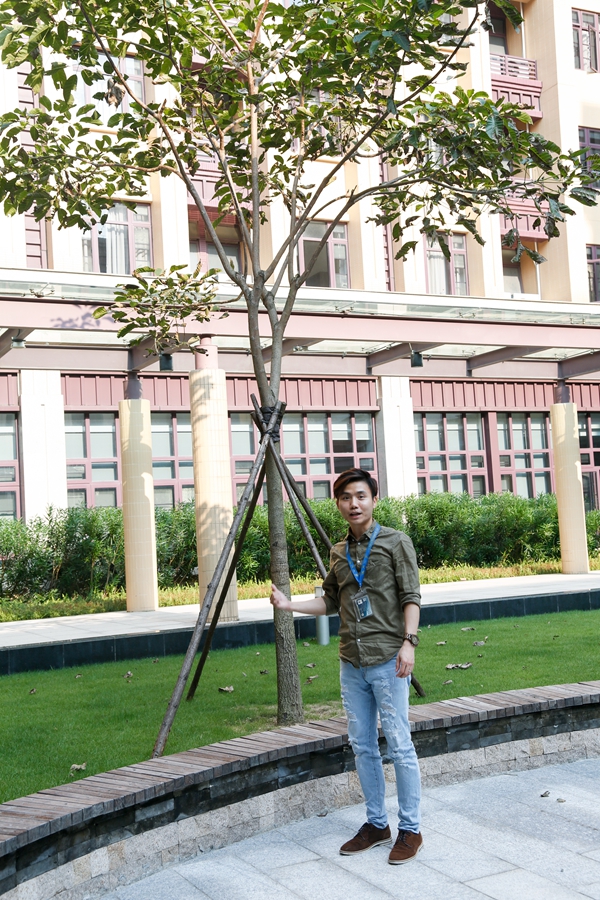
Simon Lok feels thankful that the trees in his college’s courtyard survived the typhoon
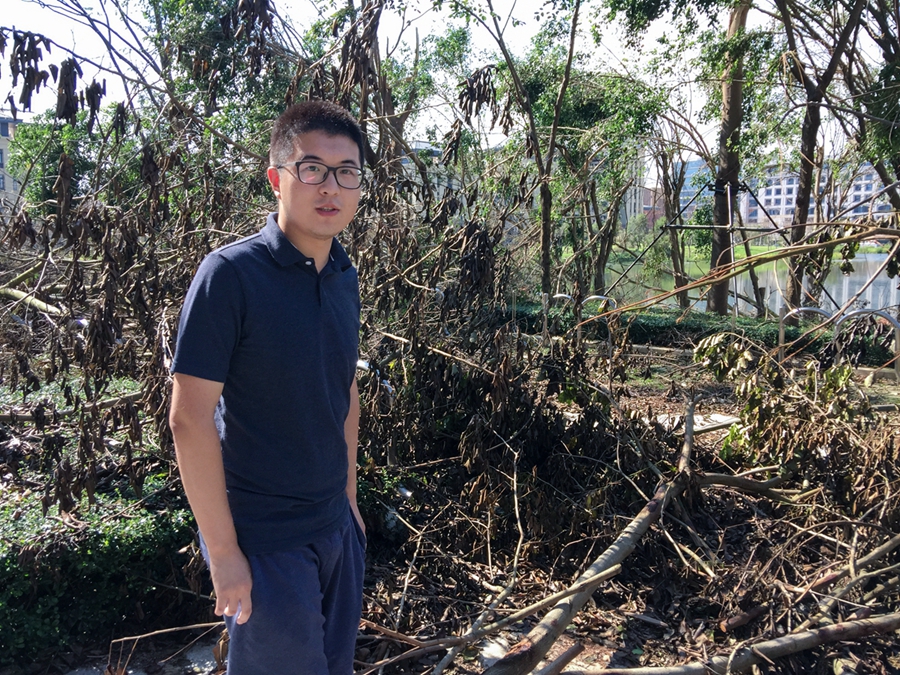
Song Zhihao
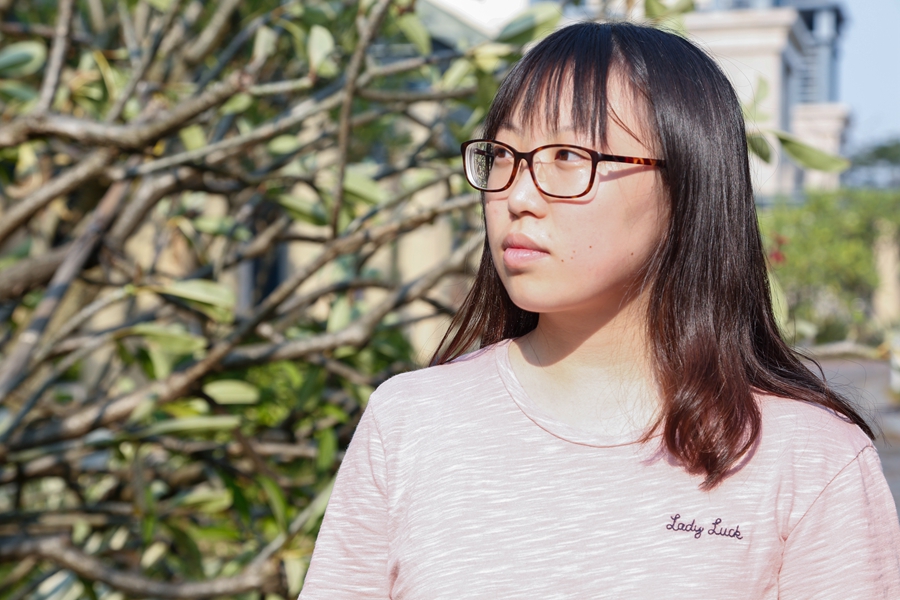
Apple Wong
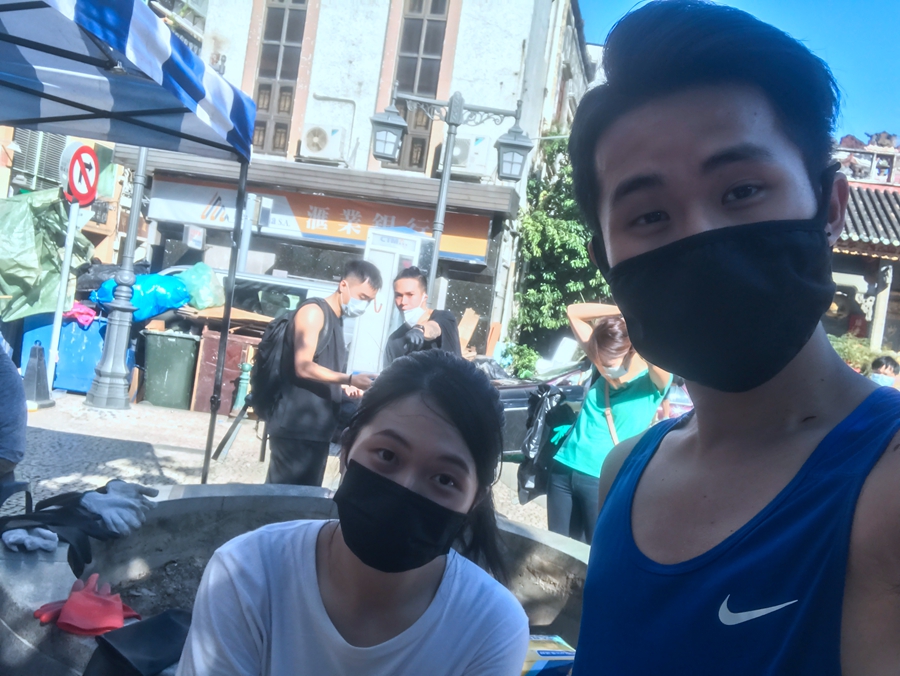
Iao Chon Hou (right) works as a volunteer on the street
